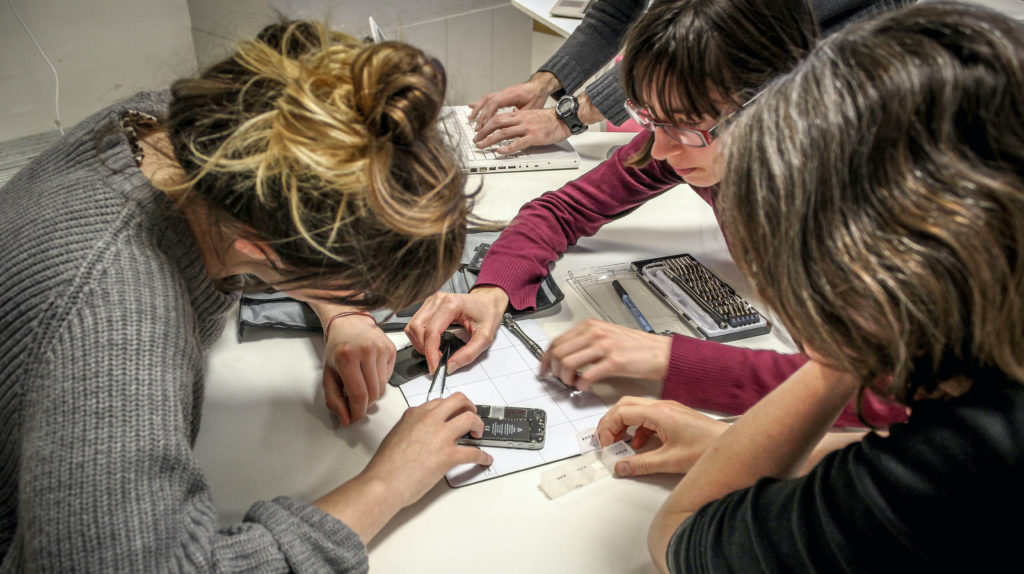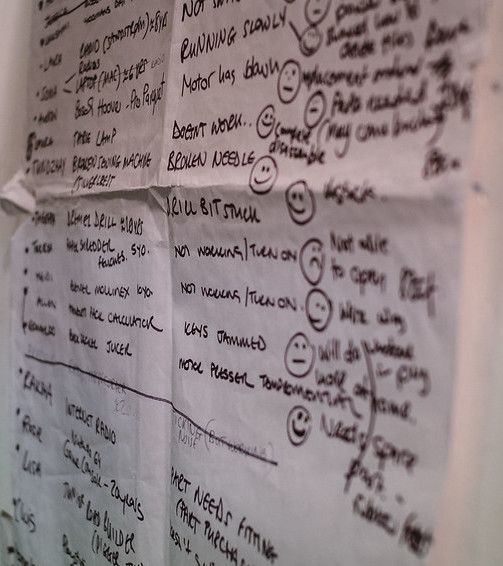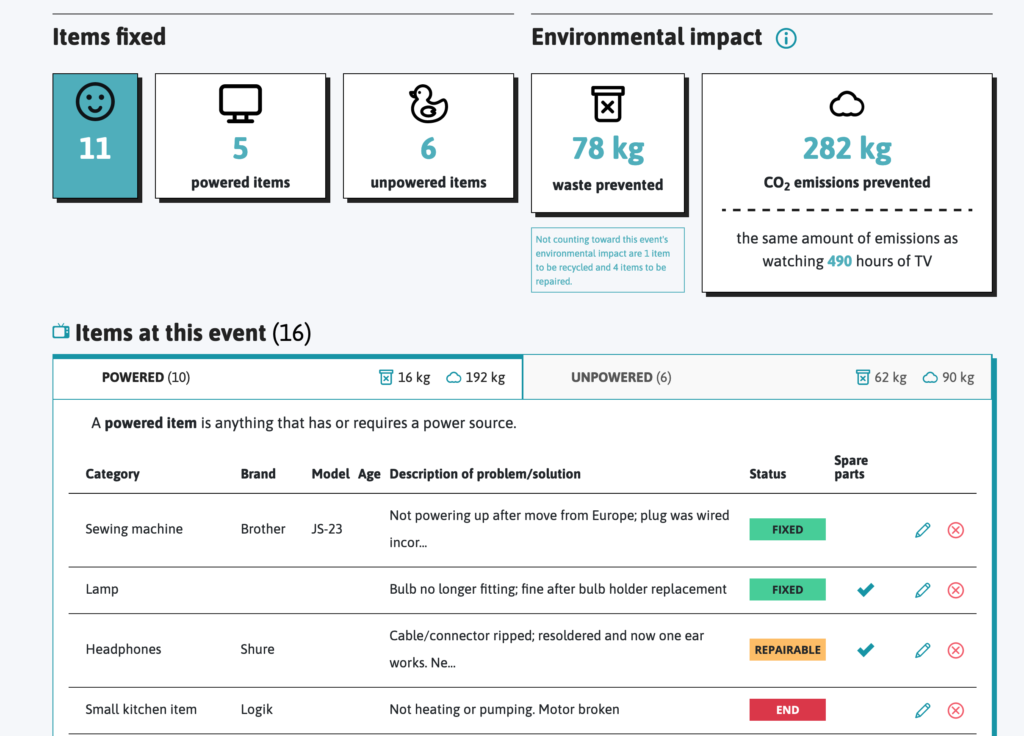
All around the world, community repair groups are helping people fix their broken belongings at Repair Cafés, Restart Parties, Fixit Clinics and more. Many of these groups have their own ways of recording the products they fix and the problems they encounter. Others might not have thought about recording these things at all.
Keeping records of all these broken items helps us build powerful evidence to argue for more repairable products. So if you’d like to share the information you already collect about the products you see, or start recording this data for the first time, here’s how…
What information should you record?
The more details you can write down about each product you see at your repair event, the better. But repair events can get pretty busy, so it’s not always easy to record loads of information.
As a minimum, try to record the following information about each product you see:
- Session data: Information about when the repair took place and through which community repair group:
- Name of your repair group
- Event date
- Product data: Information about the product/device that someone has attempted to fix:
- Type of product (e.g. laptop, hair dryer, toaster.. See the list of products we use)
- Brand (which company made the product? e.g. Dell, Phillips, Epson…)
- Estimated product age or year of manufacture
- Repair data: Information about the attempted fix and its outcome:
- Problem (what was wrong with the product? Give as much detail as possible here)
- Repair Status (was the product ‘Repaired’, ‘Repairable’ (but not fixed on the day) or ‘End of Life’?)
- Repair Barrier (if it wasn’t fixed, what was the main reason for this?)
If you can record all that data for each product, it becomes much easier to share it with us at the Open Repair Alliance. That’s because it follows our open repair data standard (ORDS) for the collection and sharing of data on small electrical and electronic products repair.
For a full list of all the information you can collect and more technical detail, visit our open standard document.
If that all sounds too complicated, don’t worry: there are a number of websites that you can use that can help you record the right information and share it with us automatically. Keep reading for more info.
How can you record repair information?
Every community repair group is different, so there’s no single method for recording repair data that suits everyone. (You can find an outline of different approaches here).
 That said, the easiest way to record the right data and share it with the Alliance is to use one of our partners’ free web tools:
That said, the easiest way to record the right data and share it with the Alliance is to use one of our partners’ free web tools:
- The Restart Project has developed a community platform, Restarters.net, where event organisers and repairers can enter repair data and measure their impact on the Fixometer tool (pictured). This is also used by a number of other community repair networks around the world
- The Repair Cafe Foundation has also released an online tool to record repair data: Repair Monitor
- Anstiftung collects repair data on its own platform for Repair Cafés in Germany
- Fixit Clinic asks participants to fill in online forms about their product before and after each clinic
- Repair Cafe Wales also asks participants to fill in online forms before each Repair Cafe
Each tool works a little differently, so have a look around to find the one you prefer.
If you choose to use one of these tools, please only use one. A couple of times a year, the Alliance combines the data from each tool to produce one big dataset that can be used for analysis. If you use more than one tool, your data could be double-counted.
Get in touch for help
Please let us know if you decide to contribute with your data, and in what way you will collect and share it. And feel free to get in touch if you need help getting started.